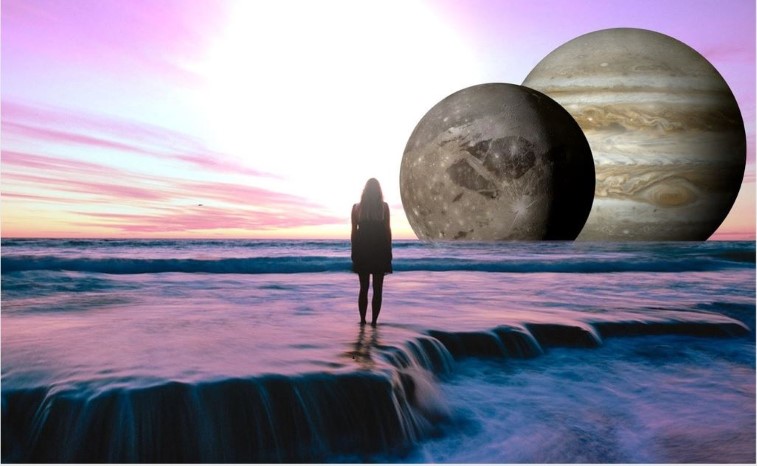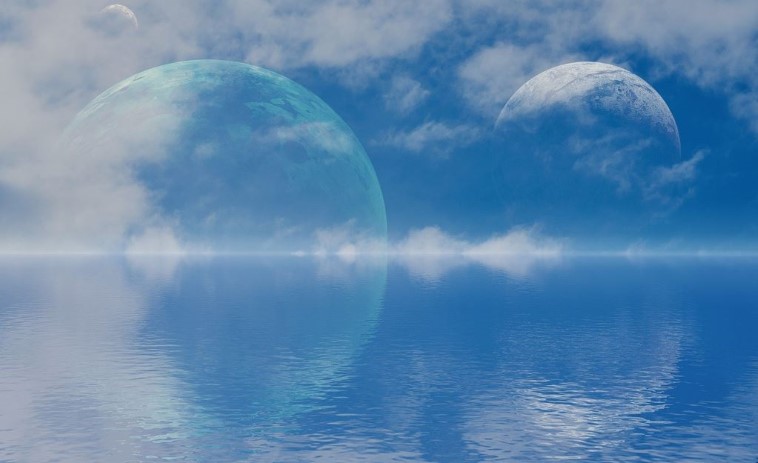Oceans of water in our solar system – where to find them?

Our planet is bathed in water. Over 70% of its surface is covered by oceans, seas and lakes, and there is water deep below the surface of the planet.
The oceans are on average five kilometers deep, and in the Mariana Islands as much as eleven. There is a total of 1.3 trillion liters of water on Earth, or 1.3 billion cubic kilometers. There is, therefore, quite a lot of it.
But everything is relative because, on the other hand, there is not as much water on Earth as it seems to us when we are standing on the seashore. The thing is that those mentioned five kilometers are the average depth of the ocean, imperceptible compared to the diameter of the Earth, which is a little more than 12,740 kilometers.
In addition, it turned out that there is more water on some bodies of the Solar System than on Earth, even though these bodies are sometimes much, much smaller in diameter than our planet.
The largest ocean of water is located (this will be a big surprise for many) on Jupiter! Jupiter is a giant ball of gas with a small solid core – so how can it have an entire ocean?

It’s a matter of defining the ocean. Deep below the clouds of Jupiter, there is an ocean – but an ocean of liquid metallic hydrogen.
If an ocean of liquid metallic hydrogen doesn’t suit you – a liquid “non-metallic” ocean is found in Jupiter’s neighborhood, on its large moon Europa. Scientists know about that ocean based on satellite surface analysis.
Those analyzes talk about the movement of the plates of the satellite’s ice crust that slide over liquid water. And the Hubble Space Telescope has even recorded what looks like jets of water droplets emanating from Europa.
How much water is there in Europa?
Well, no one knows that, but it is assumed that there is much more of it than water in all the oceans of the Earth. By the way, it is located under the ice crust, the thickness of which is estimated at some 100 kilometers.
Then there is Ganymede, Jupiter’s largest satellite, 5268 kilometers in diameter. Ganymede is even bigger than the planet Mercury. There is also liquid water on Ganymede under a 150-kilometer-thick layer of ice, and estimates speak of an even six times larger volume of water than there is on our planet.
Saturn’s moon Enceladus also has water. What’s more, it springs from this satellite in the form of occasional, very powerful geysers. And how much water this satellite contains is unknown.

Our planet differs from the listed bodies, and as far as water is concerned, it differs in that it, our water, is liquid even on the surface of the Earth, which is not the case with the other listed bodies.
However, astrobiologists believe that the mere existence of liquid water, even if buried under the surface, is sufficient for the existence of life. This is based on our experience that wherever there is water on Earth, there is also life.
Against them, the skeptics have another saying: The existence of water on a body does not mean that there is life on that body. For now, neither of them can be said to be right, so we are waiting on evidence to figure out this dilemma, hopefully in the near future.

